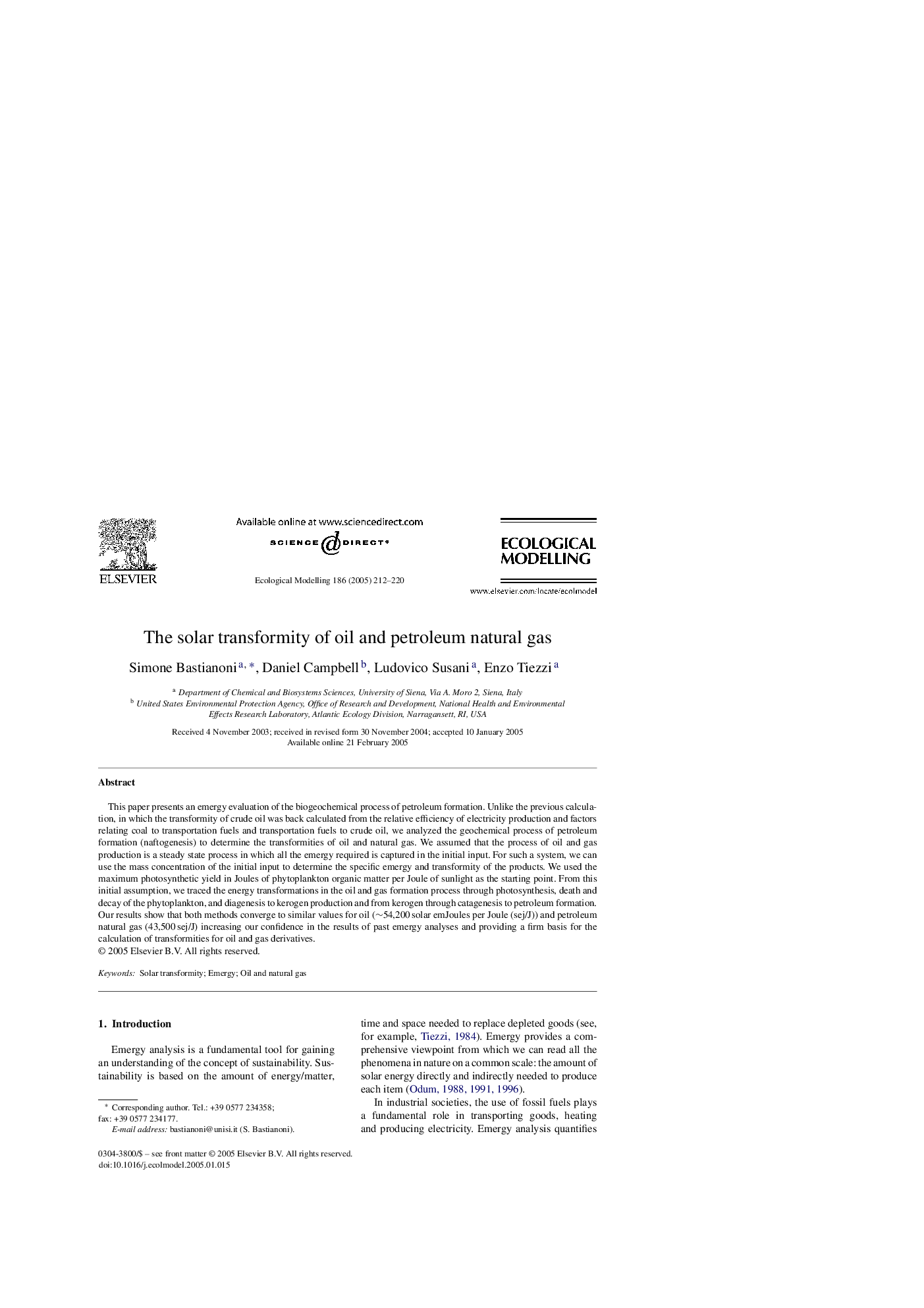| Article ID | Journal | Published Year | Pages | File Type |
|---|---|---|---|---|
| 9443444 | Ecological Modelling | 2005 | 9 Pages |
Abstract
This paper presents an emergy evaluation of the biogeochemical process of petroleum formation. Unlike the previous calculation, in which the transformity of crude oil was back calculated from the relative efficiency of electricity production and factors relating coal to transportation fuels and transportation fuels to crude oil, we analyzed the geochemical process of petroleum formation (naftogenesis) to determine the transformities of oil and natural gas. We assumed that the process of oil and gas production is a steady state process in which all the emergy required is captured in the initial input. For such a system, we can use the mass concentration of the initial input to determine the specific emergy and transformity of the products. We used the maximum photosynthetic yield in Joules of phytoplankton organic matter per Joule of sunlight as the starting point. From this initial assumption, we traced the energy transformations in the oil and gas formation process through photosynthesis, death and decay of the phytoplankton, and diagenesis to kerogen production and from kerogen through catagenesis to petroleum formation. Our results show that both methods converge to similar values for oil (â¼54,200Â solar emJoules per Joule (sej/J)) and petroleum natural gas (43,500Â sej/J) increasing our confidence in the results of past emergy analyses and providing a firm basis for the calculation of transformities for oil and gas derivatives.
Keywords
Related Topics
Life Sciences
Agricultural and Biological Sciences
Ecology, Evolution, Behavior and Systematics
Authors
Simone Bastianoni, Daniel Campbell, Ludovico Susani, Enzo Tiezzi,
